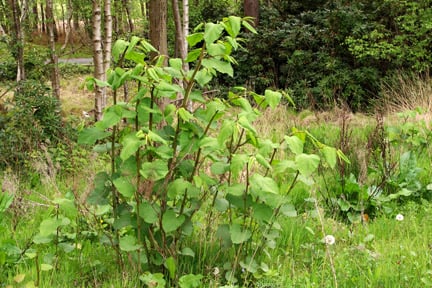Japanese knotweed, Britain’s most notorious invasive plant, affects an estimated one million homes across the UK and costs the economy more than £245 million every year.
Its aggressive growth and deep-rooted rhizomes make it a persistent problem for homeowners and property professionals alike.
According to a new YouGov survey commissioned by invasive plant specialists Environet, 77% of UK adults have heard of Japanese knotweed but while awareness is widespread, misinformation remains rife.
Myths about how the plant spreads, how to treat it, and its impact on property transactions continue to cause confusion, unnecessary fear, and in some cases, costly mistakes.
COMMON MISCONCEPTIONS
To help separate fact from fiction, Environet has published a guide tackling the ten most common misconceptions about knotweed covering everything from home remedies to legal responsibilities and mortgage implications.
The company says one of the most persistent myths is that household products like bleach or petrol can kill knotweed.
In reality, these methods are ineffective. The plant may appear dead, but its rhizome system – the underground root network that allows it to spread – typically survives and will regrow once conditions improve.
Similarly, covering knotweed to block out sunlight won’t kill it. Instead, the rhizomes often grow laterally in search of light, emerging at the edges of patios, driveways, or tarpaulins. “Even if you can’t see it, the plant may still be alive underground for years,” Environet warns.
NOT ILLEGAL
Another widespread belief is that knotweed can push directly through concrete. While it cannot penetrate solid concrete, it can exploit existing cracks, joints, and weak points in structures, causing secondary damage as it expands.
On the legal side, it’s also a myth that it’s illegal to have knotweed on your land. Homeowners are not required to notify authorities, but they are legally responsible for preventing it from spreading onto neighbouring properties.
Those who fail to disclose its presence during a property sale could face legal action for misrepresentation.
MORTGAGE MISINFORMATION
Mortgage lending is another area clouded by misinformation. While in the past many lenders refused to finance properties affected by knotweed, most will now consider them – provided there’s a professional management plan in place from a reputable firm, backed by an insurance guarantee.
However, Environet cautions that even if knotweed has been treated, sellers must still declare its historical presence when completing the Law Society’s TA6 property information form. Failure to do so could lead to legal claims and compensation costs if the buyer later discovers the issue.
TREATMENT OPTIONS
Treatment options also vary more than many homeowners realise. Herbicide treatments are most effective during the growing season, typically between May and September, but excavation – an increasingly popular method – can take place at any time of year, including winter. This allows for faster and more permanent removal.
When it comes to neighbouring properties, Environet stresses that property owners cannot force their neighbours to remove knotweed unless it has crossed the boundary. Until that point, polite negotiation is the only option.
Disposal, too, is often mishandled. Knotweed should never be added to compost, as even a tiny piece of rhizome weighing just 5g can regrow into a full plant. Instead, it should be disposed of by licensed professionals who follow strict environmental regulations.
NOT SPREAD BY SEED
And despite common belief, knotweed does not spread by seed in the UK. All plants here are female clones, meaning they reproduce vegetatively through their rhizomes rather than sexually.

Environet Director Emily Grant says: “There are plenty of unhelpful myths about Japanese knotweed that only add to homeowners’ anxiety.
“It is the most problematic plant in the country, but it can be managed and, with the right treatment plan in place, eradicated for good.
“As we head through autumn, knotweed will start to die back and become harder to spot, but the winter months can be the ideal time to tackle it, ensuring the garden is back to full use during the spring and summer months.”
With knotweed awareness increasing among property professionals, Environet hopes that clearer understanding will help reduce unnecessary panic. The company advises homeowners to seek expert assessment if they suspect knotweed on their property and to take early action before it spreads.
For buyers and sellers alike, knowing the facts can make the difference between an informed decision and an expensive mistake. And while Japanese knotweed may have earned its fearsome reputation, experts insist it’s a problem that can be controlled – if handled correctly.











